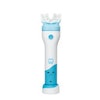
Nurse-led oral hygiene instruction as part of an integrated prenatal and oral care program reduced gingival inflammation in pregnant women, according to a University of Alabama (UAB) at Birmingham School of Dentistry news article.
The guidance about brushing and flossing not only reduced gingivitis, but it also improved prenatal outcomes.
"By working with the nursing staff and training them on how to provide oral hygiene instructions when a patient comes in for prenatal care, we found that we can make an impact on a patient's overall health," Dr. Nicolaas Geurs, dean of the UAB School of Dentistry, said in the article.
Gingival inflammation -- red, swollen gums that bleed during brushing and flossing -- during pregnancy is common, affecting 60% to 75% of pregnant women, according to the U.S. Centers for Disease Control and Prevention. Pregnancy gingivitis occurs because of hormonal changes in a woman's body and their effects on gums.
Pregnancy gingivitis not only increases a woman's risk of oral conditions like tooth loss and systemic diseases, but it can adversely affect the fetus, increasing the risk of preterm birth and low birth weight.
UAB researchers wanted to test a prenatal-oral care model in which oral health hygiene instruction led by nurses along with an over-the-counter home care regimen improved gingival inflammation in pregnant women with moderate-to-severe gingivitis compared with a standard oral hygiene control group, according to the story.
Approximately 750 pregnant women between eight and 24 weeks of pregnancy were monitored at two medical centers. The women had to have at least 20 natural teeth and moderate to severe gingivitis (> 30 bleeding sites). The women were assigned to either the oral health instruction (OHI) group, which included instruction supplemented with an educational video and advanced over-the-counter antibacterial oral hygiene products, or a control group, which received oral hygiene instruction from nurses and standard products.
Furthermore, the women were monitored using the whole-mouth gingival index (GI) and periodontal probing depths at baseline and months one, two, and three.
Both groups had significantly reduced GI scores (p <.001) and periodontal disease (p <.03) from baseline to the study's conclusion. The OHI group, though, had modest, statistically greater decreases in GI (p ≤ .044) than the control group, the researchers noted.
Additionally, the decrease in periodontal disease "directionally favored" the OHI group, though the differences were slight (<0.03 mm) and not statistically significant (p > 0.18), they wrote.
"The main takeaway from this study is that those who are pregnant should keep plaque off their teeth, which can easily be done through good oral hygiene, or brushing and flossing," Geurs said.



















